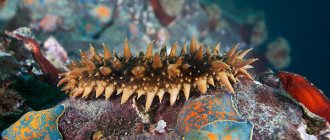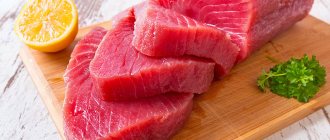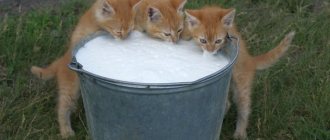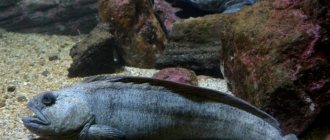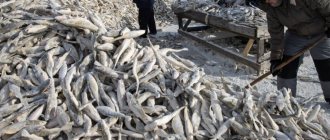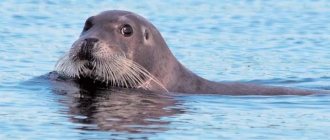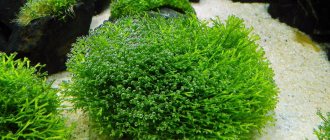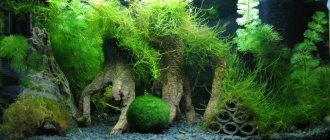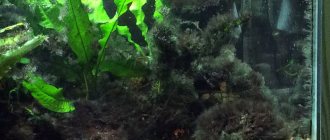When creating the microclimate of our aquarium, we try to select plants that have a beneficial effect on the life of the fish, while being easy to care for and pleasing to the eye. Every fish lover wants a plant to grow quickly, not react to certain fluctuations in temperature and water composition, and to get along well with the inhabitants of the aquarium. Duckweed is considered one of these fauna representatives. It not only has decorative value, but is also used to shade some areas of the aquarium, and is also a tasty food additive for fish.
What you need to know about duckweed
The name duckweed is well known to everyone, but few people have a clear idea about this plant. It comes from a genus of monocotyledonous plants of the araceae family. In nature, it is widespread in tropical and temperate climates exclusively in fresh water reservoirs. Outwardly it looks like a mat of small leaves floating on the surface of standing or weakly flowing water.
The use of duckweed in aquariums serves as a biological filter and creates an excellent food supply for fish, amphibians and turtles.
Although duckweed is often perceived by humans as a weed, it copes well with the role of an aquarium orderly, purifying water, absorbing and processing waste products, and maintaining the microclimate clean and tidy.
Being a plant source of protein, this plant is excellent as a feed for many types of fish and other aquarium inhabitants; it is used not only fresh, but also in dry form.
Botanical description and natural habitat
Duckweed (Lemna) belongs to the Araceae family. It is a perennial aquatic monocotyledonous plant, except for one species - tropical. The name comes from the Russian word ryasy, which meant beads. These are microscopic plants that move on the surface of stagnant waters and form real settlements. They are classified as plankton. They are found in nature in swamps, lakes, natural and decorative ponds and do not live in fast river water. The growth rate is high, it is quite difficult to remove, so there is a comparison with weeds. It will not be possible to divide Duckweed into a leaf and a stem. Its body looks like an oval or elongated plate (leaf); at the bottom there may or may not be an almost transparent root, on the side there are branches that grow and separate. This is how reproduction occurs.
Photo gallery of Duckweed:
Veins (5-7) with a number of air sinuses (1-2) and a barely noticeable root help the plant to stay on the water. The plates are pale greenish in color, dense. Their bottoms are smooth, shiny, yellow or white, sometimes with red splashes. Small, inconspicuous flowers, usually light or lemon, appear quite rarely. The fruit resembles a bag in appearance; its seed ripens inside, but with its help Duckweed does not reproduce.
The optimal temperature for development is +20…+28 °C, but can grow at +6…+33 °C. A distinctive feature is that it survives at low temperatures, under ice.
The entire plant may freeze, but it will form viable buds (turion buds), which will begin a new development cycle in the spring. It tolerates unfavorable conditions at the bottom of the reservoir, where it sinks due to the high starch content. It has received popular nicknames “frog sack” and “duck grass” because waterfowl love to eat it.
Duckweed can be found in almost all countries of the world, except the Arctic. It prefers warm and humid climates, but also grows in the temperate zone. She ended up there thanks to birds and animals, sticking to their limbs and thus moving over long distances.
Types of duckweed
Of the variety of species, several of the most favorite ones for decorating aquariums and food supply stand out:
| Widespread not only in the middle zone of our country, but throughout the world, due to its unpretentiousness and inselectivity to growing conditions. It has yellow-green rounded leaves measuring 3-4 mm with a single root. The temperature of the content is 12-30°C, the hardness and value of the water do not matter. Used for shading the aquarium and as a vitamin supplement in the diet of fish. |
| The natural distribution area is moderately warm regions of our planet. It is rare in Russia, except in reservoirs in the southern regions. It differs from its relatives in appearance - it is an openwork ball floating in the water column. Three-pointed rays of translucent leaves up to 1 cm long form thickets in the water in which small fish hide. Characterized by pronounced seasonality of growth. In winter, it should be removed from the aquarium into a separate container and stored in low light and at a temperature of 5-12°C. Feels good in moderately warm aquariums with a temperature of 18-22°C with soft water and a neutral or slightly acidic reaction. Requires bright lighting, but not direct sunlight. During the flowering period, the flower stalks float on the surface of the water. |
| The name of this species speaks for itself. It is distinguished by the presence of not one, but a whole bunch of roots, which, with prolonged growth, turns into real thickets. The rounded leaves are purple on the inside, up to 6 mm in size. This species is a favorite for shrimp, as well as for spawning small fish. |
| One of the most beloved species by aquarists. Thanks to the large, up to 7 mm, juicy convex leaves, it looks attractive in the aquarium. The advantage is considered to be the fastest growth among other species and low maintenance requirements. |
Beneficial and medicinal properties in other areas, application
Duckweed has found wide application in various fields:
- In agriculture. A nutritional supplement for poultry and livestock feed in the spring and as a fertilizer for plants.
- In traditional and home medicine. They use its medicinal and healing properties.
- Cleaning water bodies. It has the ability to process heavy substances that are discharged by industrial enterprises.
- To characterize water bodies. Allows you to detect harmful substances. If there is an excess of chlorine, it turns yellow and disappears.
- Used as food in tropical countries and as a seasoning in cooking.
This variety of uses is explained by useful substances; Duckweed includes:
- aspartic and glutamic acid;
- carbohydrates;
- vitamins B, PP, A and E;
- amino acids (arginine and lysine);
- trace elements (bromine, calcium, iodine, silicon and others);
- flavonoids and triterpenes.
Due to its high protein content, Duckweed is called “water lentil”. Its nutritional values are the same as those of cultivated cereal grains. Duckweed is used to treat animals and humans, producing various medicines:
- pills;
- juice;
- decoction;
- tinctures.
Here are some recipes for using Duckweed:
- Moisten the affected areas of the skin with the infusion and gargle for sore throat. Treat bronchitis and psoriasis by taking it orally.
- Compresses are made based on decoctions, which helps reduce inflammation, swelling and pain, and itching from insect bites.
- The tincture is instilled into the eyes for glaucoma, into the nose for a runny nose.
- The powder is taken orally as a cleanser for diathesis and allergic rashes. By mixing it with honey, vitiligo, rheumatism, and impotence are treated.
- A mixture with burdock seeds is used for nephritis.
- Alcohol tincture helps with allergies, as an analgesic and anthelmintic.
- Ointment with Duckweed treats joint diseases and skin rashes.
In folk medicine, duck grass is used to treat asthma and is used to reduce pain from hemorrhoids and metabolic disorders. Recently, scientists have found that it contains an anti-carcinogenic component, which gives a stable antimutagenic effect. This allows duckweed to be used in the treatment of cancer patients. The drug “Vitilem +” was created for the treatment of vitiligo.
General recommendations for use: all recipes give a positive effect if you follow the instructions. The medications must be taken for a certain period of time and only after consultation with your doctor.
There are a number of contraindications (individual intolerance and vegetative-vascular dystonia), which can cause nervous overexcitation. To prepare preparations from Duckweed at home, you can purchase it in a pharmacy in dried form.
Care instructions
Basic criteria for normal duckweed growth:
- temperature;
- lighting;
- regular care.
The main criterion for development, growth and attractive appearance is lighting. Duckweed loves bright, long-term (at least 12 hours a day) lighting.
The more light the plant receives, the more intense the process of photosynthesis occurs, making it possible to naturally enrich the aquarium water with oxygen and cleanse the environment of organic waste.
It should be borne in mind that this indicator has the opposite effect: if the duckweed grows strongly, absorbing other plantings, it is enough to turn off the lighting for 3-4 days or replace the overhead light with a side light. This stops the growth and vital processes of the plant. Under such conditions it dies.
The temperature regime is set depending on the requirements of keeping the fish. The only requirement: there should not be strong frequent temperature changes.
Regular maintenance means changing the water in the aquarium according to plan, since if there is a lot of contamination, the plant will not have time to cope with the cleaning functions. Organic waste, settling on the leaves, can lead to rotting and, as a result, death of duckweed.
Content
Keeping dwarf sagittaria is relatively easy; it is one of the few plants that tolerates highly alkaline and hard water, although it is better to stick to average values of hardness and acidity.
Just like all ground cover plants, it prefers very fine soil rich in nutrients, or with the addition of clay, or fertilizers must be constantly added to the water. Sagittaria is particularly intolerant of low iron levels, and if you see yellowed leaves of the plant, it means there is an iron deficiency in the aquarium. Sagittaria dwarf will appreciate the additional introduction of CO2 into the aquarium, however, even without the addition of carbon dioxide, this aquarium plant will feel great. If CO2 is not introduced, then it is advisable to increase the lighting of the aquarium to stimulate plant growth.
For dwarf sagittaria, only moderate lighting is enough, but strong light is still better. If the lighting is strong, then after quite a long time the leaves of the plant turn red.
Ideally, an arrowhead aquarium should use bright fluorescent lamps, T5 or T8, with a power of at least 0.75 watts per liter of water, but the plant will feel better with more powerful lighting. LED lights and lamps can also be used, but they must be bright enough, and all commercially available LED lights are rated for plants with low light requirements. It’s another matter if you use a lamp assembled by yourself from correctly selected LEDs, or combine LED strips with fluorescent lamps.
The water temperature should be between 18 and 26°C, although the plant can temporarily tolerate temperature fluctuations between 15°C and 29°C.
In order for sagittaria to feel good, you need to regularly add liquid fertilizers to the water, both macro and micro fertilizers, including iron.
The plant requires periodic pruning. Since the runners are quite close to each other, the leaves will reach towards the light, growing quite tall.
How to plant duckweed correctly
In about half of the cases, duckweed enters the aquarium unintentionally. This plant is introduced along with other algae or organic fish additives. Under such conditions, if you plan to breed duckweed in your aquarium, you just need to follow the rules of care, then it will delight you with a lush, bright mat. If duckweed is an unwanted guest in your aquarium, you need to limit the lighting, and it will self-destruct.
Often fish lovers, especially beginners, buy seedlings in specialized stores. This plant is attractive because it does not require special soil, fertilizers or water parameters. It is enough just to release the shoots into your aquarium and create normal lighting. Duckweed takes root in almost any conditions.
Taxonomy
Synonyms
- Lenticularia Seg., Pl. Veron. 3: 129 (1754).
- Lenticula P. Micheli ex Adans., Fam. Pl. 2: 471 (1763).
- Hydrophace Hallier, Hist. Stirp. Helv. 3:68 (1768).
- Telmatophace Schleid., Linnaea 13: 391 (1839).
- Staurogeton Rchb., Deut. Bot. Herb.-Buch: 33 (1841).
- Thelmatophace Godr., Fl. Lorraine 3:18 (1844).
- Lenticularia P.Micheli ex Montandon, Guide Bot. Sundgau: 308 (1868).
Kinds
There are 14 species in the genus:
- Lemna aequinoctialis Welw. — Tropical duckweed, or Duckweed equinox
- Lemna disperma Hegelm. — Duckweed two-seeded
- Lemna gibba L. - Humpbacked duckweed
- Lemna japonica Landolt
- Lemna minor L. - Lesser duckweed
- Lemna minuta Kunth - Small duckweed
- Lemna obscura (Austin) Daubs
- Lemna perpusilla Torr. — Duckweed is tiny
- Lemna tenera Kurz
- Lemna trisulca L. - Duckweed trilobed, or Duckweed trifoliate
- Lemna turionifera Landolt
- Lemna valdesiana S.Watson
- Lemna valdiviana Phil.
- Lemna yungensis Landolt
Reproduction
Duckweed reproduces rapidly by vegetative means. Daughter shoots form at the tips of the leaves, with the help of which it is easy to transplant the plant into another tank or container.
To reproduce, duckweed does not require special conditions: in a short period of time it can cover the entire surface area of the aquarium.
Considering that many fish owners use duckweed specifically for feeding purposes, especially goldfish, it is deliberately bred, as it is a valuable source of vegetable protein. If the plant spontaneously reproduces intensively, it can be trimmed and the excess can be dried for subsequent addition to fish food.
Origin
Duckweed can be found anywhere in the world - Southeast Asia, North America, Africa, Australia. As already mentioned, it spreads very easily, and it is only found on the continent of Antarctica. But different species are found in different regions. In total, duckweeds belong to five different genera:
- Lemna (13 species) - common in Southeast Asia and North America;
- Landoltia (spotted duckweed) - originally lived in the southern hemisphere of the globe, now also common in Europe and North America;
- Wolfiella - mainly Africa and America;
- Wolffia (about 10 species) - more common in Australia and Africa;
- Spirodela - widespread;
Causes of plant development disorders
The main reason that can disrupt the development, slow down growth, and lead to decay and death of duckweed is non-compliance with the rules of care, violation of temperature and light conditions. These indicators directly affect the full existence of algae.
Thus, duckweed is considered the most unpretentious among aquarium plants; its rotting or death can only be achieved intentionally. In other cases, you just need to change the water in the tank on time and provide a light source. This plant is so capable of self-regulation and regeneration that it will adapt to any living conditions.
Spreading
- Europe: Northern Europe (Denmark, Finland, Norway, Sweden, UK);
- Central Europe (Austria, Belgium, Czechoslovakia, Germany, Hungary, the Netherlands, Poland, Switzerland);
- Eastern Europe (Belarus, European part of Russia, Ukraine)
- Southern Europe (Albania, Bulgaria, Yugoslavia, Greece, including Crete, Romania, France, including Corsica, Portugal, Spain, including the Balearic Islands);
- Western Asia (Saudi Arabia, Yemen, Afghanistan, Iran, Israel, Jordan, Lebanon, Syria, Turkey);
- Macaronesia (Madeira, Canary Islands);
- USA (Illinois, Nebraska, Wyoming, New Mexico, Texas, Arizona, California, Nevada, Virgin Islands);
It grows in stagnant bodies of water and is much less common than duckweed. The distribution center in Europe is in Poland.
Overwinters and tolerates unfavorable conditions for growth as seeds.
Fertilizer use
Fertilizers are not specifically used for this vigorously growing plant. Unless other representatives of the flora of your aquarium require additional feeding. Duckweed feels great without additional stimulants and pleases the owner with rapid growth.
Duckweed is the most unpretentious aquarium plant that does not require special conditions for full growth and reproduction. Even a beginner can handle caring for this representative of the flora. When choosing plants, you should take into account the undeniable benefits of duckweed, not only as part of the design, but also as a quality water purifier, a nutrient medium and shelter for fish.
Absorbing excess minerals and enriching the water with oxygen, the plant does not require additional filters or compressors, performing their functions perfectly. And with intensive reproduction it is easily controlled with regular pruning.
Is it possible to do without foam?
The device is expensive, which is why aquarists often wonder whether this product is really necessary for the well-being of marine life. In principle, if you have enough time to care for the aquatic world, you can do without such a filter. In this case, frequent water changes will be required, which, no matter how the parameters are adjusted to the norm, is still stressful for the fish.
Of course, a sparsely populated aquarium can do without a flotator, but still installing one will help you maintain your home sea at the required level.
A saltwater aquarium is an expensive pleasure, and when planning its purchase and installation, it is worth including a skimmer in the list of costs. Only the right equipment will allow you to maintain a reservoir in good condition, even in the absence of professional knowledge. Experts advise beginners starting a marine aquarium to make it as autonomous as possible so that maintenance is as simple as possible.
Making an injector for a pump
The essence of the injector is that we need to narrow the hole at the pump inlet and cut in the air supply tube at the point of its expansion; a vacuum will form in this place, which will suck in air.
For this we need a polypropylene coupling and a piece of thick-walled pipe. We solder the pipe into the coupling on one side and cut it flush. At the expansion point we install a piece of tube for a 4mm hose.
The pump is ready, now skeptics (like me) can start testing. For these purposes, you can use a 3-5 liter eggplant.
You shouldn’t count on results right away, since foaming will begin no earlier than in a day, or even more, until the inner surface is covered with a bacterial film.
And the result more than satisfied me, because in one day, such a makeshift machine knocked out more skimming than two of my pneumatic foams in a week.
